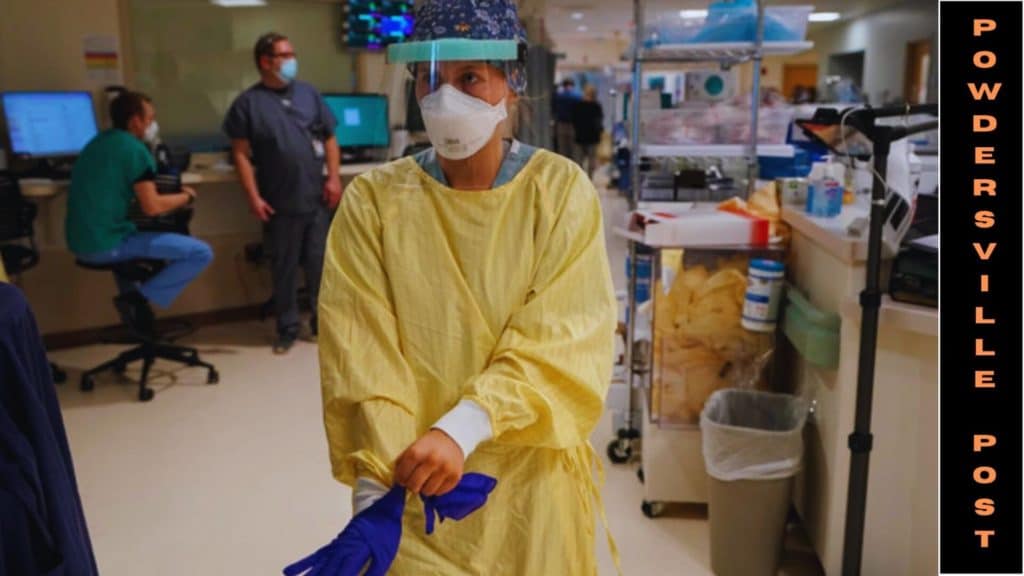A Different COVID Surge Is Noted In US Hospitals This Time
Nikki Attkisson | Last Updated : January 7, 2022The epidemic of a new type of coronavirus, known as Omicron, poses a global health hazard. The acute infection is threatening to turn into a pandemic from February 27, 2020. Researchers have indeed been able to reduce the incidence of cases in the U.s. because of the excellent work of the Centers for Disease Control and Prevention (CDC) other public health practitioners across the country.
A Different COVID Surge Is Noted In US Hospitals This Time
However, if COVID-19 spreads globally, it appears likely that, at minimum, some institutions in the US States would observe an increase in COVID-19 patients.

That Joint Commission is already closely monitoring the COVID-19 outbreak, and our worry has grown recently. Many healthcare institutions, we’re confident, are actively attempting to address this problem. We wish to stress our commitment to the CDC, and other global health stakeholders as the proper source of data and advice for health care organizations and clinicians as data & advice about COVID-19 continues to grow.
• During client triage or registration, ask regarding signs of a respiratory illness, record of travel to places where COVID-19 is being transmitted, or interaction with individuals who may have COVID-19.
• Attempt to reduce the risk of contamination by screening patients before they arrive at a facility.
• Attempt to reduce the risk of exposure by screening patients before they arrive in a healthcare setting (for example, asking patients who phone for appointments about their travel history) and identifying them as soon as possible after they arrive (such as by posting signs advising patients to put on a mask if they have respiratory symptoms).
• If a patient’s triage screening results in a positive result, the patient has become a person undergoing investigation (PUI), which should be notified directly to the patient’s doctors, prevent and management services, as well as other community hospital workers according to a specified protocol.
• Wear eye protection and follow basic touch and environmental precautions.
• Control visitor access and mobility within the facility by monitoring inventory and the distribution network to guarantee an adequate supply of protective equipment.
• Implement methods and policies to notify key facility personnel, such as preventing infection, health care epidemiological, facilities leadership, occupational, lab tests, and frontline employees, about suspected of having COVID-19 individuals as soon as possible.
• Define who will interact and cooperate with state and local public health agencies.
• Hand sanitizer, hand sanitizer, hand sanitizer.
Also, keep in mind that some COVID-19-infected individuals will exhibit unusual signs (such as nausea, diarrhea, or abdominal pain). Even if patients do not even have respiratory issues, individuals who’ve already visited a place where instances have been verified must be tested for COVID-19.
“In the past, we didn’t have the vaccine, so it was us all hands together, all the support. But that support has kind of dwindled from the community, and people seem to be moving on without us,” said Rachel Chamberlin.
So because the environment is rapidly changing and recommendations may change, all companies should designate a person or people to actively study new information and advise as it comes accessible and assesses if current practices and messaging inside their organization need to be modified. In the case of these symptoms suggestive, organizations should assess their appropriate communication mechanisms to ensure that people in charge know how to call their local medical authority at any time of day or night.
The Joint Commission guidelines were created to reduce risk and equip organizations to respond to a disaster. We are optimistic that accredited organizations would be competent to ensure the security of their patients and visitors by the following routine practices and evolving CDC advice.
With over 15 years as a practicing journalist, Nikki Attkisson found herself at Powdersville Post now after working at several other publications. She is an award-winning journalist with an entrepreneurial spirit and worked as a journalist covering technology, innovation, environmental issues, politics, health etc. Nikki Attkisson has also worked on product development, content strategy, and editorial management for numerous media companies. She began her career at local news stations and worked as a reporter in national newspapers.
